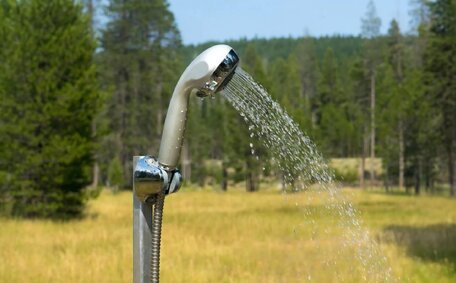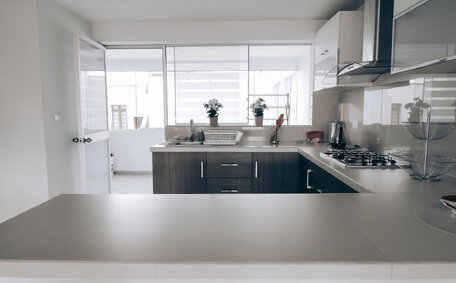Introduction to Hot Water System Thermostats
The thermostat is crucial for regulating temperature in both gas and electric water heaters, ensuring the water doesn’t become dangerously hot. It controls the unit’s heating elements, ceasing power once the water reaches the thermostat’s set temperature. Electric water heaters, equipped with two heating elements including the upper thermostat heating element, have separate thermostats to manage their respective zones.
The upper heating element’s thermostat includes a high limit switch and is typically set between 60-70°C, ensuring water is heated to a safe, usable temperature.
The lower thermostat controls the heating for the lower element, maintaining temperatures from 70°C up to 80°C. The elevated temperature, set by the lower thermostat and maintained by the upper thermostat at its highest setting, helps inhibit bacterial growth in the tank.
A malfunctioning hot water heater thermostat can cause dangerously high temperatures or poor heating, so understanding correct examination techniques is essential. Water heater element testing, akin to thermostat examinations, is critical as components can wear out. Testing water heater elements, heaters two units in particular, along with scrutinising a suspect thermostat and substituting any defective ones, is crucial for a safe and reliable hot water supply.
Safety Precautions when Testing a Thermostat
Turn off the power to your water heater before testing the thermostat to ensure safety:
- Switch off the power at the circuit breaker and use a voltage tester to ensure there is no electricity flowing.
- Allow the water temperature to stabilise to ensure it has cooled to a safe level before proceeding.
- Wear properly insulated gloves and shoes when accessing internal components.
- Prepare an accurately calibrated multimeter for reliable testing.
- Take care to avoid contact with live electrical components and keep multimeter probes dry during testing.
- Have your first aid kit on hand in case of any injuries from heat or electric shocks.
- Keep a fire extinguisher nearby due to risk of overheated components.
Understanding how to use your tools to test water heater components, including the thermostat, is crucial; for this you’ll need proficiency as it carries risks of electric shocks and burns. Following suitable safety measures is paramount to ensure wellbeing, especially when dealing with components inside tank units.
Using a Multimeter to Test for Continuity
Calibrate your multimeter to properly test the thermostat’s electrical continuity. Ensure all safety measures are in place, including confirming the absence of voltage, before evaluating crucial components like the thermostat.
First, ensure safety by using your voltage tester to confirm that no current flows to the water heater after shutting off power. Efficiently remove plastic covering and detach the access panel to ensure safe access to the wiring. Locate the thermostat and its power wires your diagnostic targets.
Set multimeter to the meter probe terminal measure to gauge ohms resistance at the lowest setting, usually indicated by the omega symbol. Touch one probe of the multimeter to a thermostat terminal and the second to the opposite terminal. Observe the multimeter for an indication of the thermostat’s status. If there is good continuity, your multimeter should get reading very low resistance, almost zero ohms; If there’s no continuity reading, the thermostat is likely faulty and should be replaced.
If your multimeter doesn’t show a reading close to zero ohms, you may have a faulty thermostat in need of replacement. Secure all connections with meticulous care when conducting tests on the thermostat heating element of your water heater. Testing both the lower and the upper thermostat assures stable functioning of your water heater.
Testing the Upper and Lower Thermostats
Your electric water heater has two thermostats, each tasked with controlling either the upper or lower heating elements. It’s important to test both thermostats to ensure they effectively heat water to the proper temperatures.
To test the upper and lower thermostats, follow these steps:
- Turn off power to the hot water heater at the main switchboard and verify it’s off with a voltage tester.
- Remove the access panel and locate the upper thermostat wiring. Carefully disconnect all wires, paying particular attention to the blue wire, from the device.
- Set your digital multimeter to the lowest ohms setting and place one meter lead on each thermostat wire; you should get a reading indicating continuity.
- Your multimeter should register very low resistance, ideally letting the multimeter read close to 0 ohms. If not, then the upper thermostat is likely at fault and requires replacement.
- Press the red reset button on the thermostat to adjust temperature; then evaluate the upper thermostat to confirm its functionality.
- Then test the top thermostat by repeating the same process on its wiring.
- If either thermostat fails the continuity test, it requires replacing with a matching equivalent thermostat.
- Take care not to touch any live components and reattach all wires securely.
Testing both upper and lower thermostats is vital for maintaining your water heater’s performance, safety, and efficiency.
Signs of a Faulty Thermostat
Several common signs may signal the need to keep your water heater’s thermostat in check, potentially necessitating a replacement:
- If the water is excessively hot because the thermostat doesn’t turn off the heating element at the predetermined temperature, it’s time to troubleshoot.
- Disruptions in hot water supply could be because of a defective thermostat or a worn-out anode rod affecting the heating element.
- Intermittent hot water supply - If the thermostat makes erratic contact, you may only get hot water sporadically. This usually indicates a thermostat bad or connection issue.
- Bacterial odour or cold water resulting in cloudiness - If the lower thermostat isn’t maintaining hot enough water in the tank, a malfunction could allow bacteria to flourish.
- Frequent heating element failure - A defective thermostat can allow elements to overheat, causing premature burnout.
Noticing any of these signs highlights the importance of using a multimeter to check the upper and lower thermostats. Replace any faulty thermostats promptly to maintain safety and efficiency.
Replacing a Faulty Thermostat
If a thermostat is confirmed to be faulty, it’s essential to know how to replace it correctly. When replacing a thermostat, it’s important to choose an equivalent model recommended by the water heater manufacturer.
- Turn off power to the water heater and verify it is off.
- Remove the thermostat access panel.
- Meticulously disconnect the wires, including the red wire, from the failed thermostat’s terminals. Make note of each wire’s position.
- Loosen the top two screws that secure the component in place and carefully extract the defective thermostat.
- Install the new thermostat in the same orientation and secure the retaining screws.
- Reconnect the wires to the same terminals, following any printed diagram on the new thermostat.
- Make sure the wires are connected firmly and the power is off. Double-check the placement of your testing equipment.
- Replace any protective covers before restoring power.
When installing a replacement, take care not to bend or apply excess force on the thermostat or its bracket. Follow all manufacturer specifications for model type and temperature settings. Once complete, test functionality by running hot water to confirm proper operation.
Verifying Proper Water Temperature
After thermostat replacement, it’s crucial to confirm that the water temperature is being regulated effectively before returning the system to full operation.
Utilise a digital thermometer to examine the temperature your water emits from a hot tap. Allow the hot water to run for at least 1 minute before testing to get an accurate reading. Insert the thermometer probe directly into the hot water stream.
The temperature should line up with the bottom thermostat and its designated settings, within approximately a 5 degrees Celsius margin. Typical upper lower thermostat temperatures are:
- Upper thermostat - 60 to 70°C
- Lower thermostat - 70 to 80°C
If the water temperature falls within the set range, the new thermostat is functioning effectively. If not, recheck all wiring connections and positioning. The lower thermostat maintains a hotter temperature to prevent bacterial growth, managing the lower element while the upper thermostat regulates general use hot water supply.
Ensuring water heater thermostat settings are safe and efficient is crucial for a consistent hot water supply throughout your home.
When to Call a Professional Plumber
While DIY repairs can be effective, complex tasks such as those on gas water heaters are best left to professional plumbers like those at Gladesville Plumbing.
- You lack the proper tools or skill level
- Any testing involves live electrical wires
- The repair requires pipe changes or gas lines
- You need to access awkward, cramped spaces
- Problems keep recurring despite your efforts
Gladesville Plumbing’s qualified plumbers can quickly identify and resolve your hot water issues, guaranteeing your system’s safety and reliability. Don’t hesitate to contact Gladesville Plumbing at 1300 349 338 or [email protected] for assistance.






